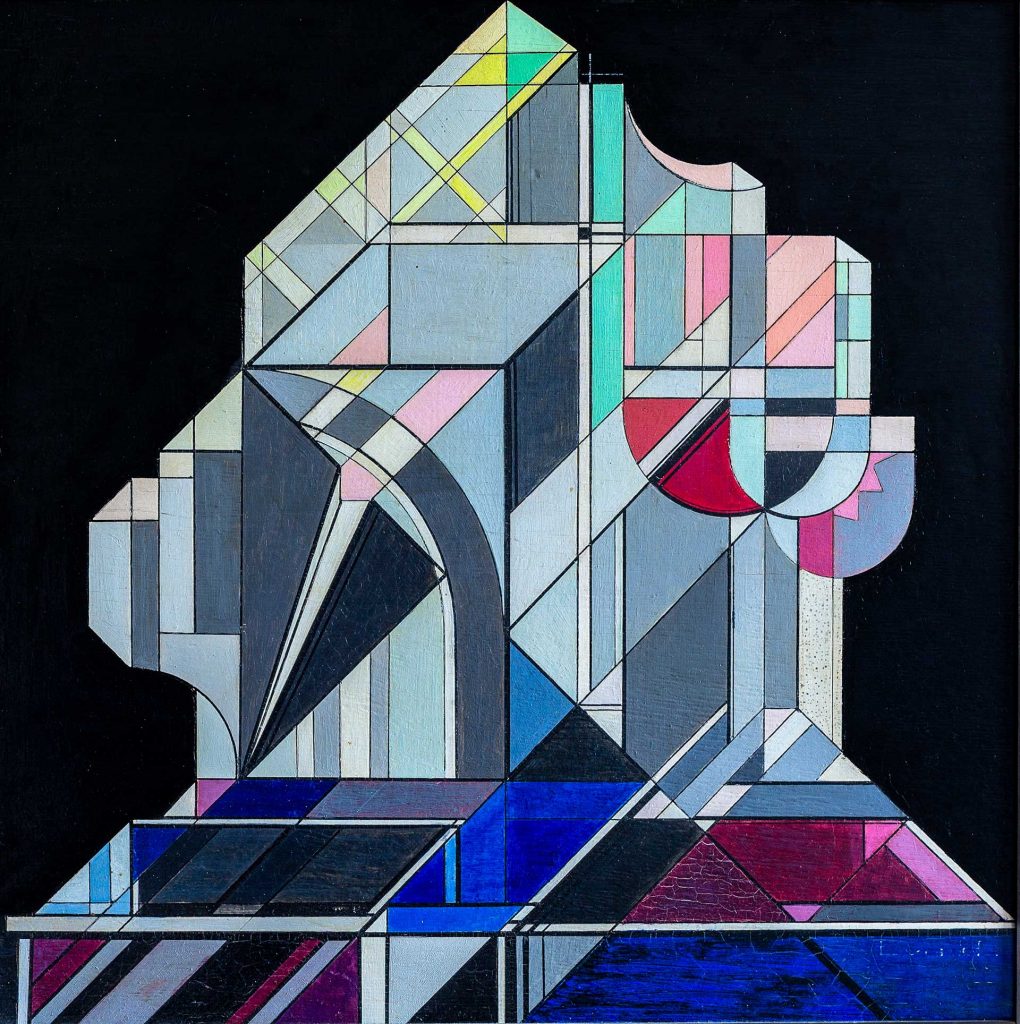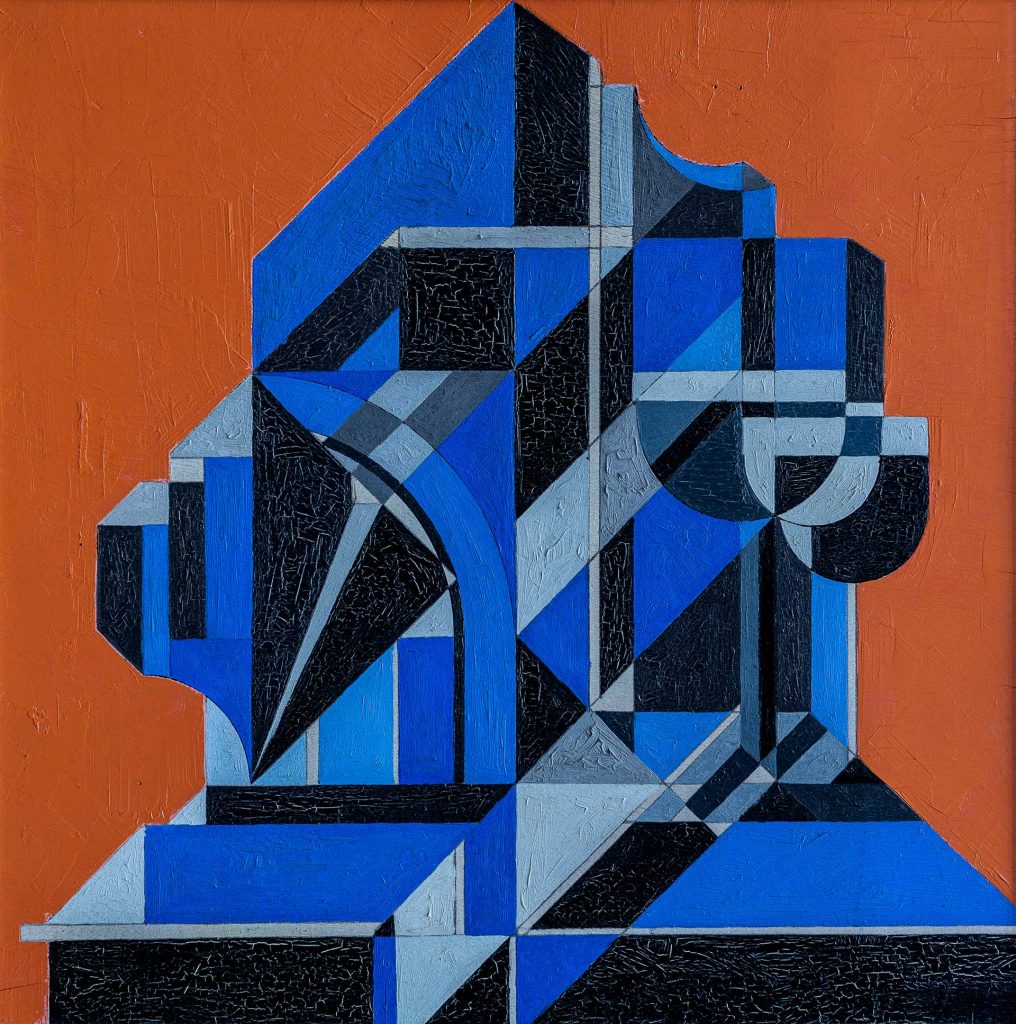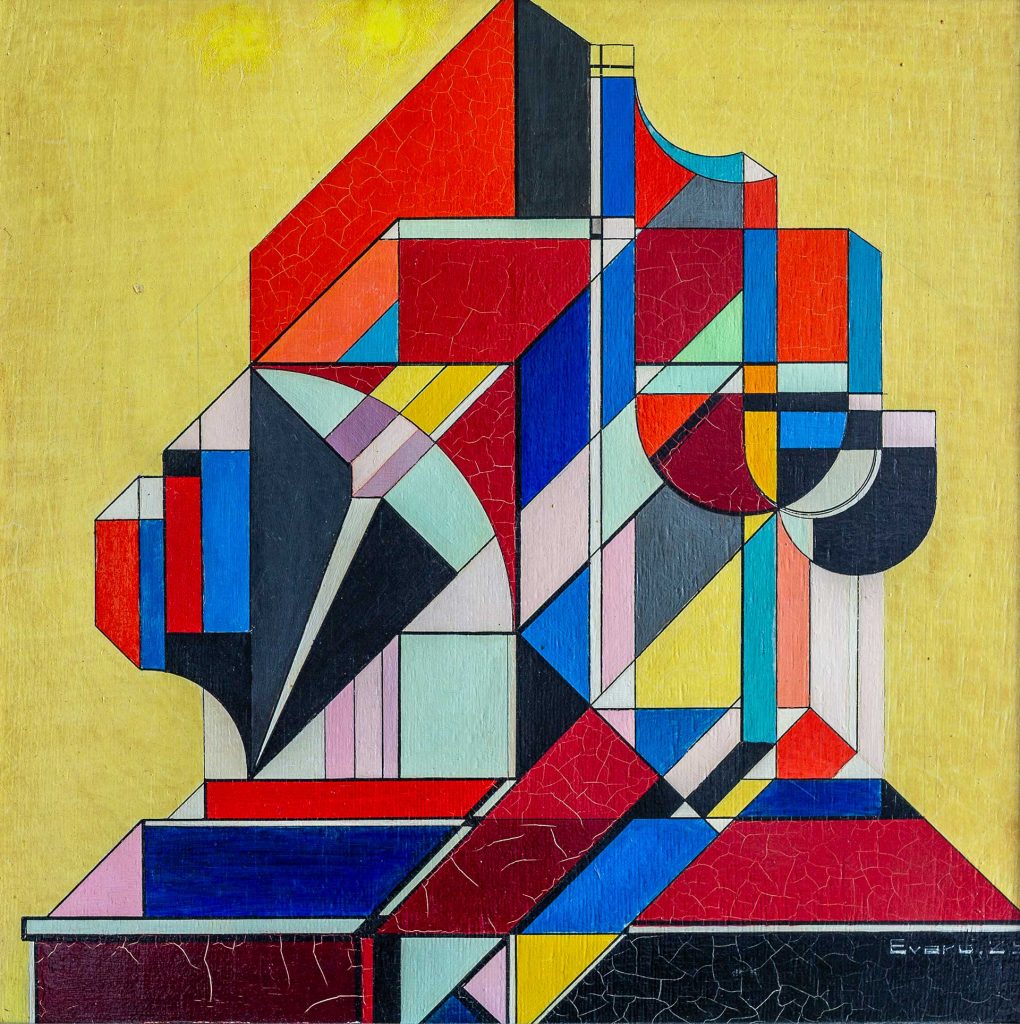


Abstract Composition, 1925, 45 x 45 cm, oil on hardboard (1-3)
The series of paintings entitled “Abstract Composition” from 1925 by the Swiss artist André Evard (45 x 45 cm, oil on hardboard) impressively demonstrates his consistent engagement with geometric abstraction and color harmonies. The three works are based on the same constructive structure, but vary greatly in color and atmospheric effect. In the first variant, Evard works with a finely tuned color palette of pastel shades such as pink, light yellow, aqua green, and shades of blue, combined with more intense accents in dark red and cobalt blue. Against a black background, the geometric surfaces unfold an almost floating effect, reminiscent of architectural sketches or glass constructions. The composition appears poetic, fragile, and reflective. In the second picture, a strong orange tone dominates the background, while the forms themselves are kept almost monochrome in cobalt blue, black, and shades of gray. The surface appears rougher, the composition stricter and architecturally more massive. The overall impression is powerful and full of tension. Finally, in the third version, a particularly lively color unfolds: a warm yellow tone as the background meets primary colors such as red, blue, and yellow, complemented by orange, black, and light pastel shades. Despite the abundance of color, the composition remains strictly structured, the surface distribution rhythmic and clear. The result is a lively, almost festive impression, reminiscent of stained glass windows. Overall, this series of works demonstrates Evard’s ability to create completely different expressive values through targeted color variation within a fixed geometric scheme. His painting seeks a harmonious connection between structure and color, making him one of the most important pioneers of concrete art in Switzerland. The alternation between cool and warm tones, between transparency and opacity, opens up a fascinating field of tension between form, light, and emotion.